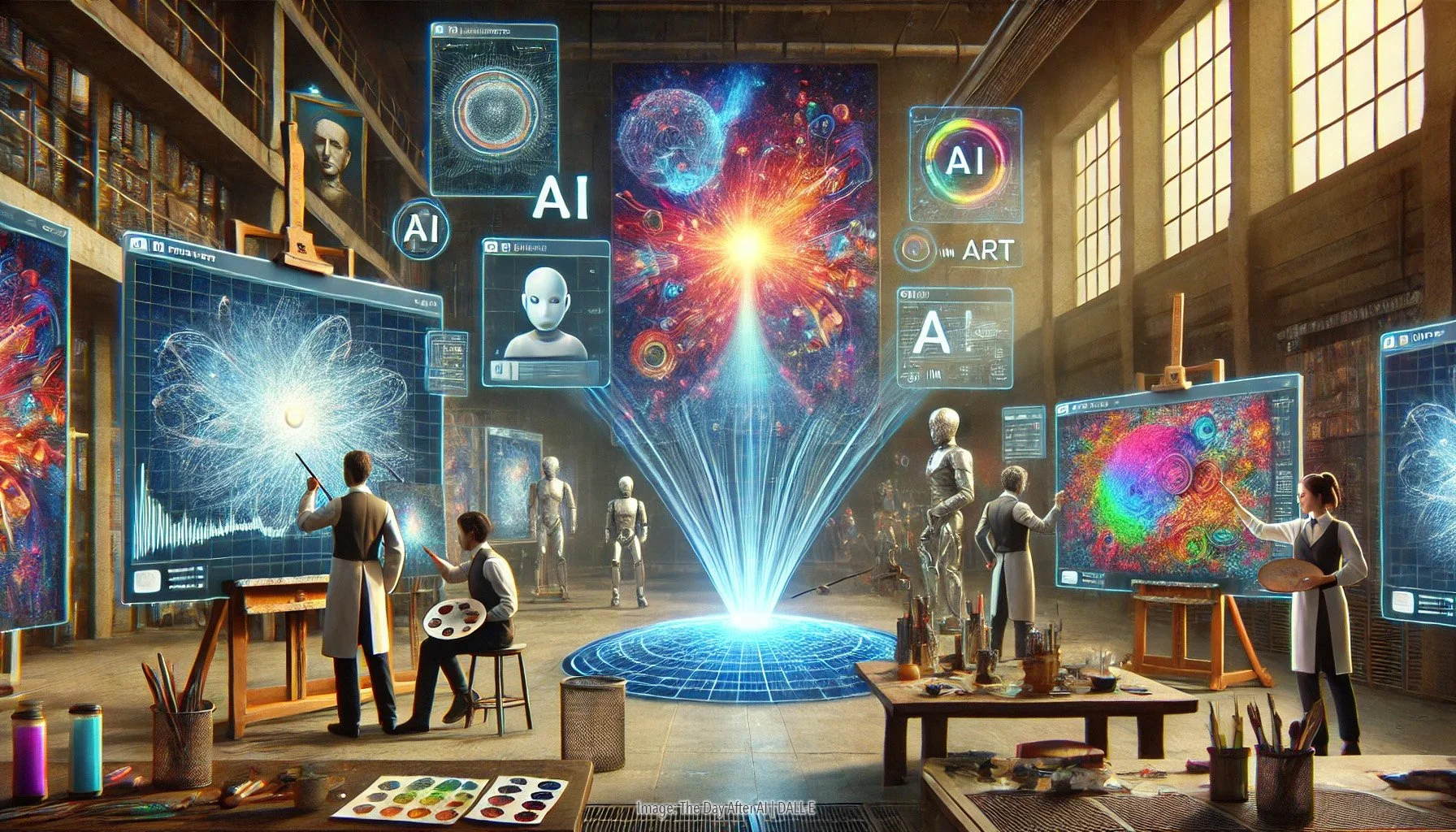From Darkrooms to Algorithms: The Evolving Canvas of Art in the AI Era
Image Credit: Jacky Lee | Art Director, TheDayAfterAI News Channel
The transition from film to digital photography marked a pivotal shift in the visual arts, reminiscent of today's transformation driven by AI. This shift was not merely a change in technology but a fundamental evolution in how artists interact with their tools. Just as photographers once moved from darkroom techniques to digital editing, artists today are transitioning from traditional brushes and canvases to algorithms and neural networks. This evolution challenges our traditional notions of what it means to create art.
Redefining Authenticity
The concept of authenticity in art has always been fluid, shaped by cultural perceptions and the prevailing technology of the time. In the era of film photography, authenticity was tied to the photographer's ability to capture reality unaltered, despite widespread manipulation techniques in the darkroom. Similarly, digital photography initially faced skepticism for its ease of manipulation. Today, AI art prompts us to reconsider what authenticity means when an artist uses data and algorithms to create visual pieces.
The Role of the Artist
With AI, the artist's role transforms from manual creator to conceptual director. AI artists use prompts and data sets to guide the creative process, much like digital photographers use software to enhance images. This shift does not diminish the artist's role but rather emphasizes different skills such as conceptual thinking, curatorial acumen, and technical proficiency. The core of artistry remains intact: the vision and message conveyed through the medium.
Image Credit: Jacky Lee | Art Director, TheDayAfterAI News Channel
Speed and Accessibility
One of the most significant impacts of digital and AI technologies in art is the increased speed and accessibility of creating and distributing art. Just as digital cameras democratized photography, allowing more people to take and share photos, AI art tools have lowered the barriers to creating visually stunning works. This democratization can lead to a surge in creativity and participation in the arts, though it also raises questions about oversaturation and the devaluation of technical skill.
Ethical Considerations and Artistic Integrity
As with any technology, the use of AI in art brings ethical considerations. Issues of copyright, originality, and the use of pre-existing artworks to train AI models are at the forefront of debates. These discussions echo past concerns about copyright and plagiarism in photography and highlight the need for clear guidelines and ethical practices in the AI art community.
The Market's Response
The art market's response to AI-generated art parallels its reception of digital photography decades ago. Initially met with skepticism, digital works have since gained acceptance and prominence. AI art is beginning to carve out a similar niche, with the first AI art pieces being auctioned and exhibited alongside traditional works. This integration into the market challenges collectors and critics to evaluate art based on aesthetic and conceptual value rather than the medium alone.
The first-ever AI artworks, Portrait of Edmond de Belamy (2018), was sold in an auction at $432,500. (Image Credit: https://news.artnet.com)
Cultural Impact and Public Perception
Public perception of AI in art is evolving. While some purists view AI as a threat to traditional artistic techniques, others embrace it as a new tool for expression and innovation. The broader cultural impact of AI art is still unfolding, with potential to influence how art is consumed, interpreted, and valued in society. This cultural shift mirrors the changes seen with the rise of digital photography, which eventually led to a broader acceptance and appreciation of new artistic forms.
Looking Forward: The Future of AI in Art
As AI technology continues to advance, the future of art will likely see even more integration of AI tools. Artists will have opportunities to explore new realms of creativity, combining traditional techniques with AI to create hybrid forms of art. The ongoing conversation about AI in art will shape not only artistic practices but also the theoretical foundations of what art can be. This evolution challenges us to think critically about the role of human creativity in an increasingly automated world, ensuring that art remains a vibrant and vital part of our cultural landscape.
Image Credit: Jacky Lee | Art Director, TheDayAfterAI News Channel




